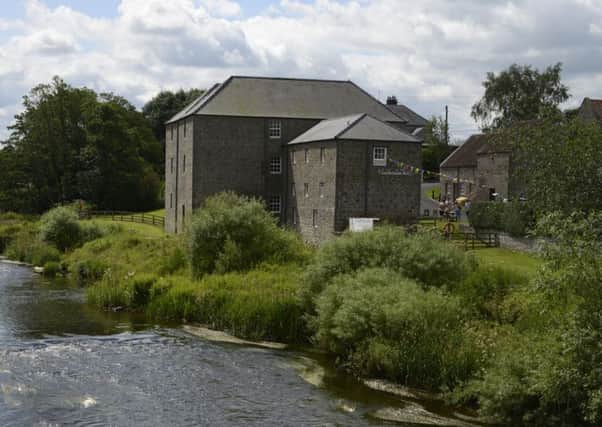Till Valley, Archaeology Society


The Blacks were extremely influential in the area in the 19th century and various members farmed at Grindon, Fenwick Steads, Kimmerston, Hay Farm, Etal Rhodes and Heaton, as well as Ford Westfield, and had interests in Etal Barley Mill and Warren Mill.
The dynasty started in 1769 when John Black took over a water-powered forge opposite Heatherslaw Mill. He started with very little, but became a successful farmer and businessman, and even established a Baptist Chapel.
Advertisement
Hide AdAdvertisement
Hide AdHe and his wife Agnes had 13 children, some of whom continued his work both in farming and as blacksmiths. One son established Blacks spade works in Spittal, and it is likely that he built the houses next door for workers who came from Ford. This led one member to state that he still had spades produced by Blacks.
David showed several images of buildings from the 19th century, which all have a prominent keystone over the entrance. As this is quite unusual, it could indicate that they were commissioned or built by the same person.
However, after the First World War there was a decline in the family fortunes. The mills and forge no longer belonged to the family, and in 1928 George Black put his affairs in the hands of creditors and moved away.
David had access to entries from 1863 in a diary kept by John Black, who was born in 1822 and farmed at Ford Westfield, which gave a fascinating insight into the life and times of farming in that period. It was interesting to hear how much social life the family had, and also how some things, such as farming shows, have changed very little.
Advertisement
Hide AdAdvertisement
Hide AdThere were entries relating to the planning of buildings, such as the Steward’s House at Heatherslaw, which is still there, as well as personal entries about births, marriages and deaths.
It was obvious that John Black was a person of some note. He took an active role in such community areas as the corn exchange in Berwick, and even purchased shares in the ill-fated Central Northumberland Railway.
This was a very interesting talk from a member of the community who has obviously spent a lot of time researching this family. Many questions were asked and some members were able to relate their own memories.
The next talk is on Wednesday, February 7, at 7.30pm, at The Cheviot Centre in Wooler, when Dr Ian Kille, a geologist of some note, will speak on Northumbrian Earth.
Advertisement
Hide AdAdvertisement
Hide AdDr Kille will describe the geology of Northumberland and the Borders to give an understanding of how human activity has exploited various aspects of that geology, from the landscape it creates to the raw materials it makes available. He also hopes to give some examples of the way that geology has helped to inform archaeology, drawing on experience with the Flodden 500 project, Peregrini Lindisfarne and Hadrian’s Wall.
All welcome. Members free, visitors £4. This change of venue is necessary because of renovation work in Crookham Village Hall.